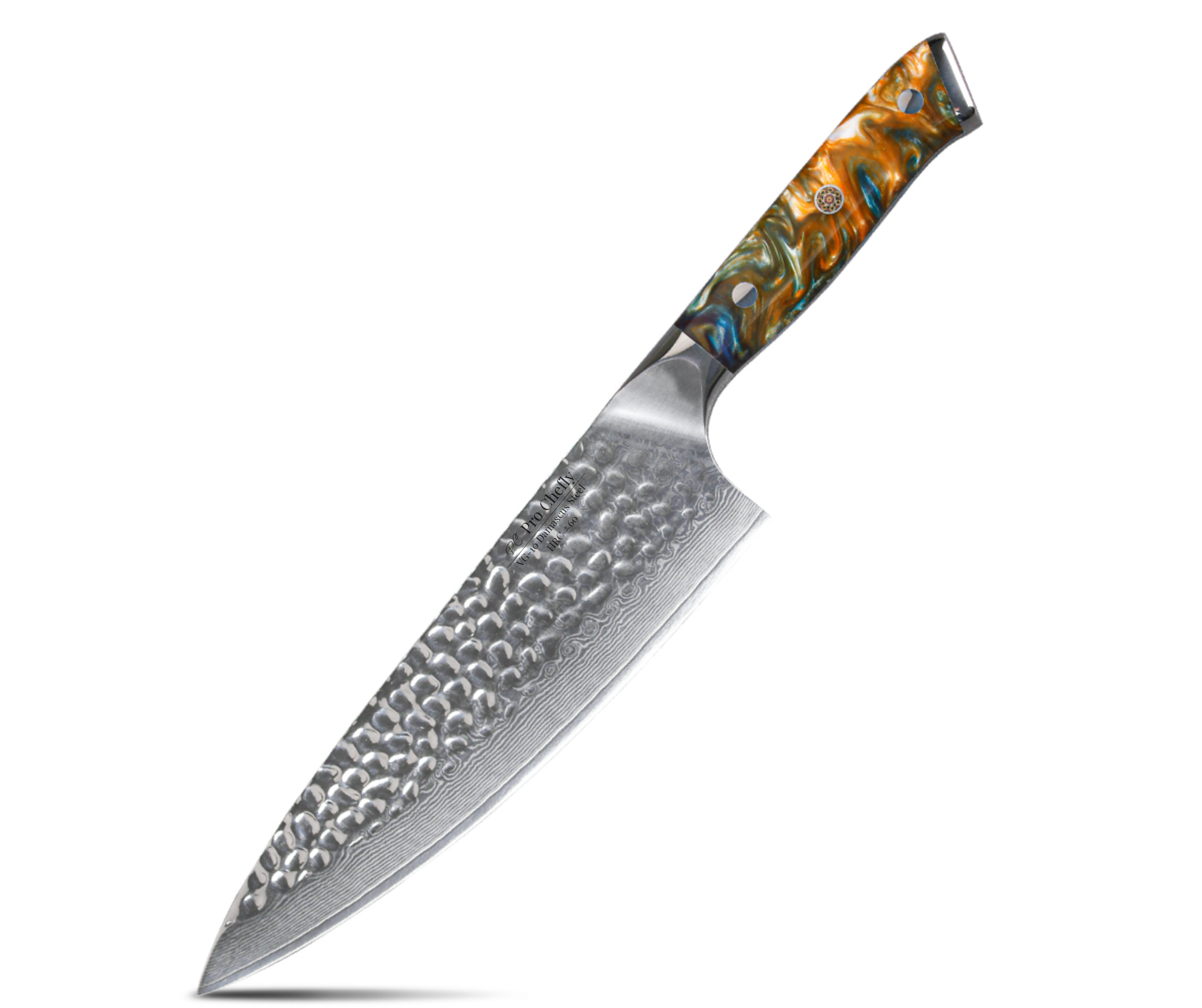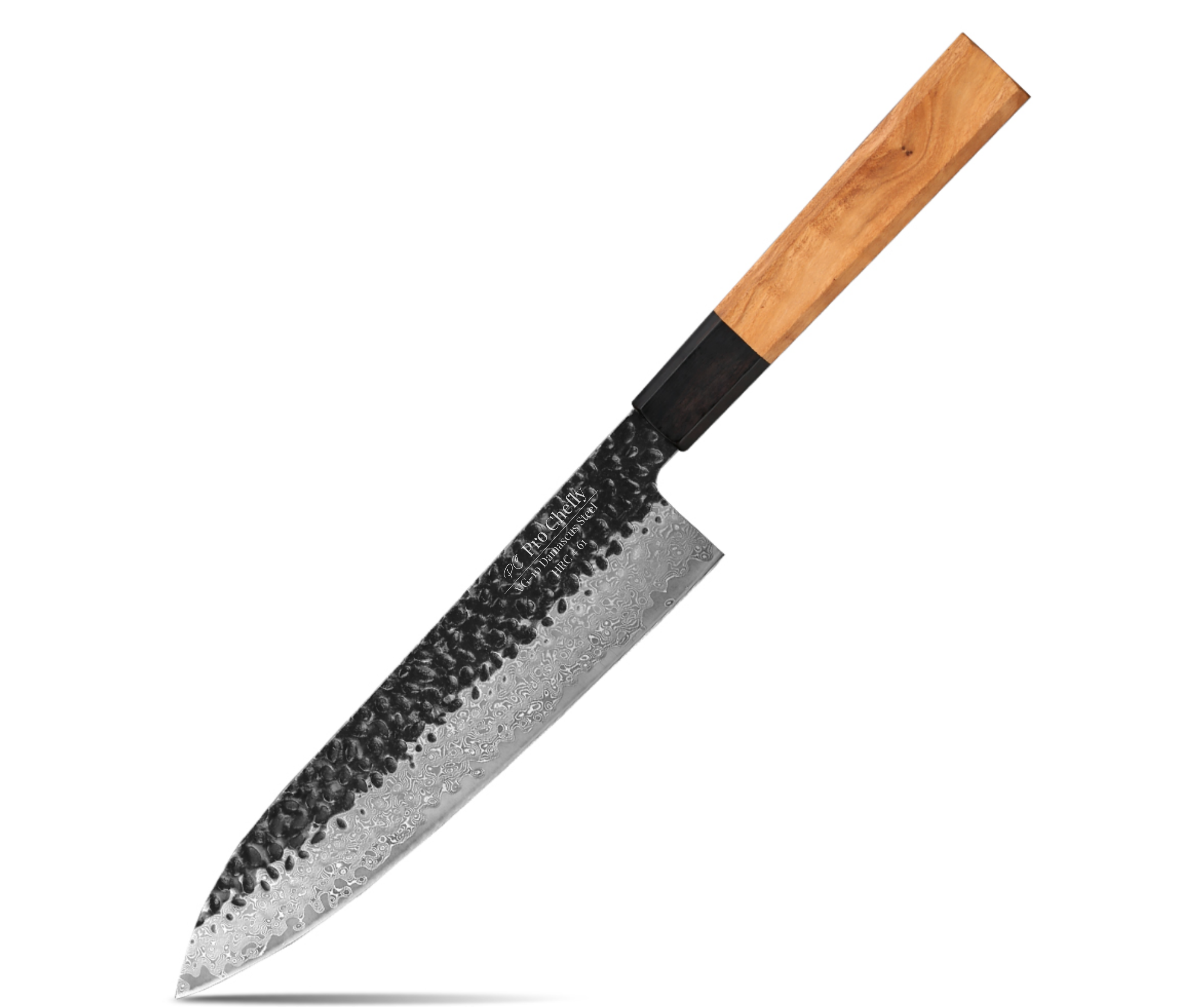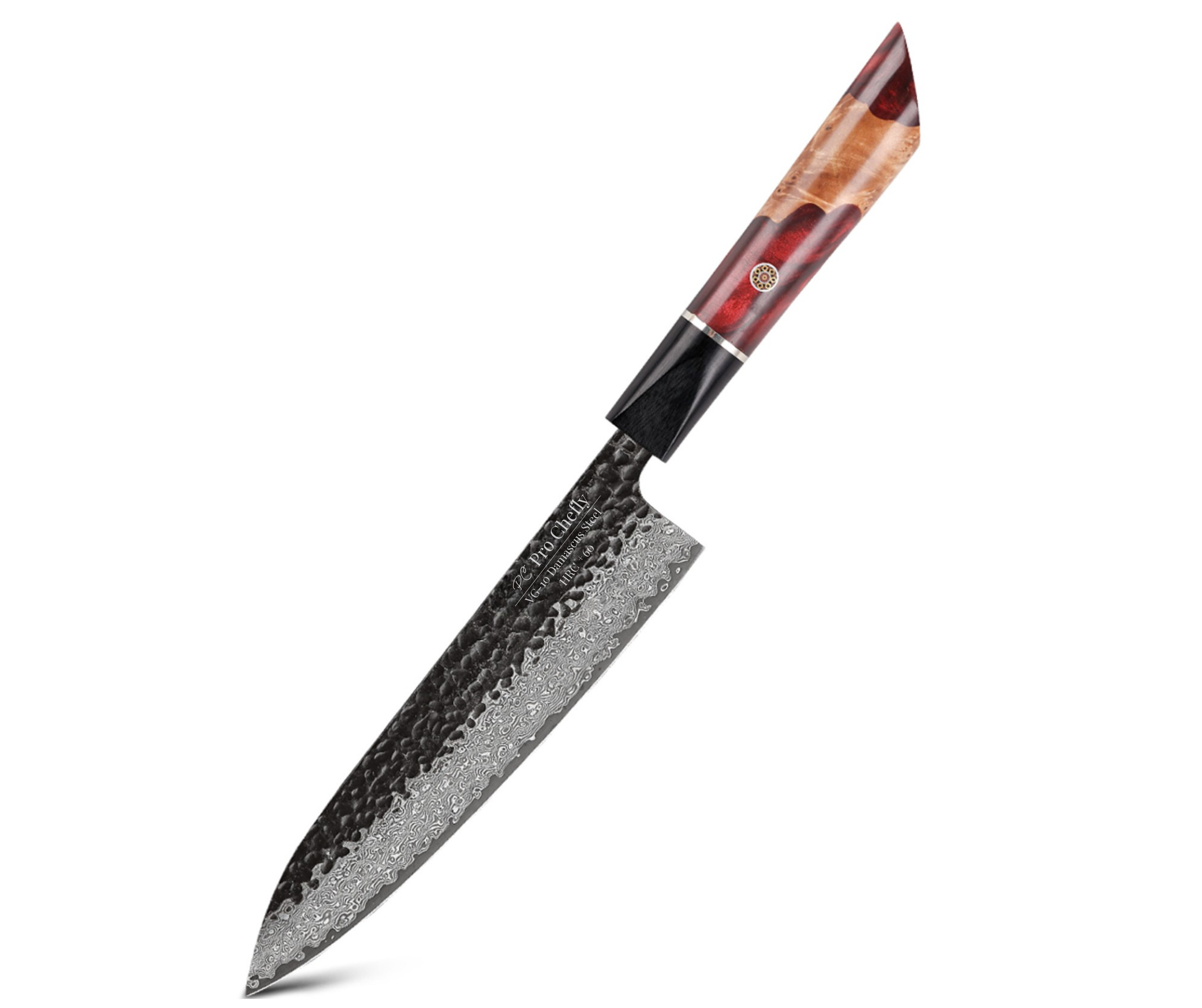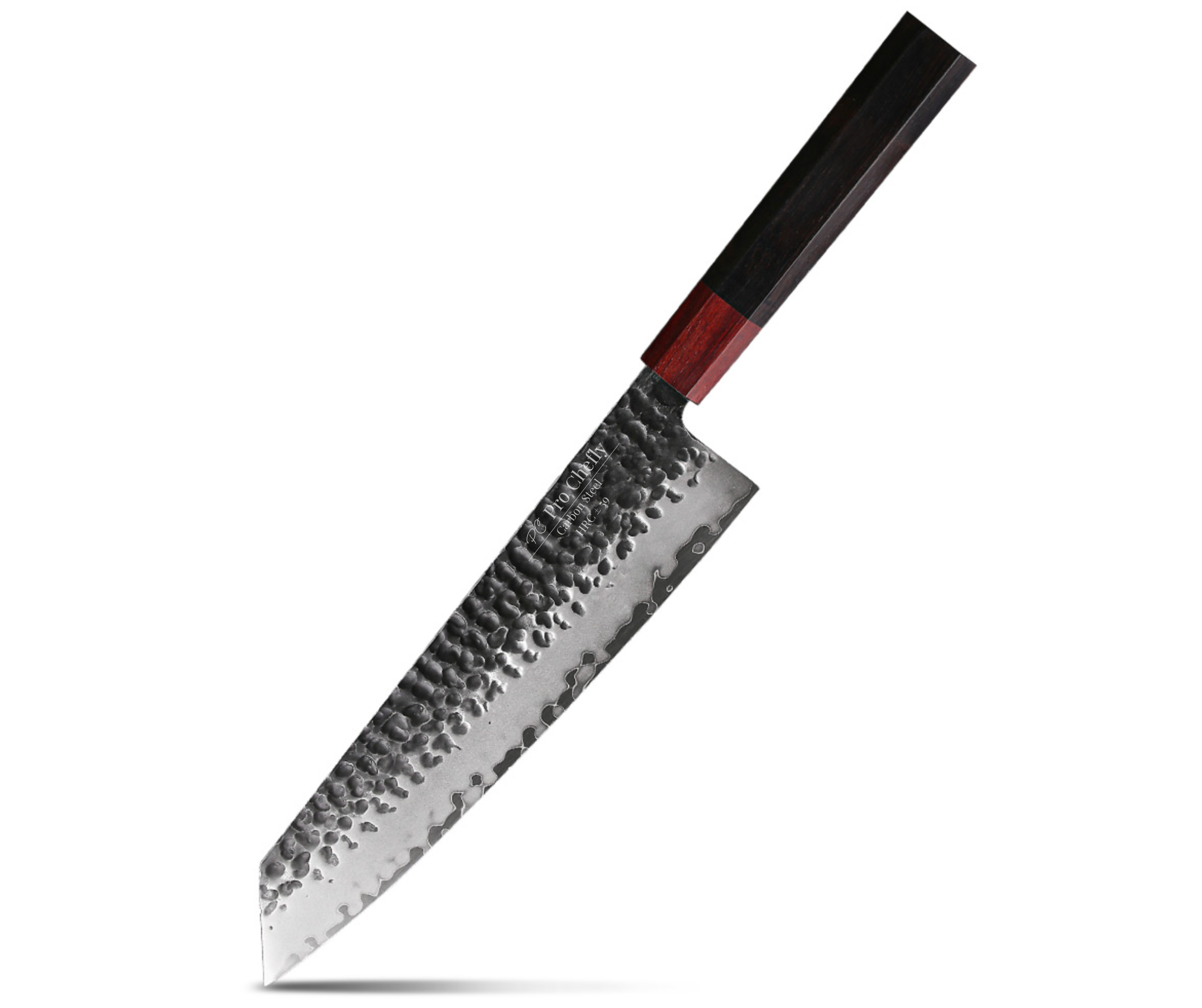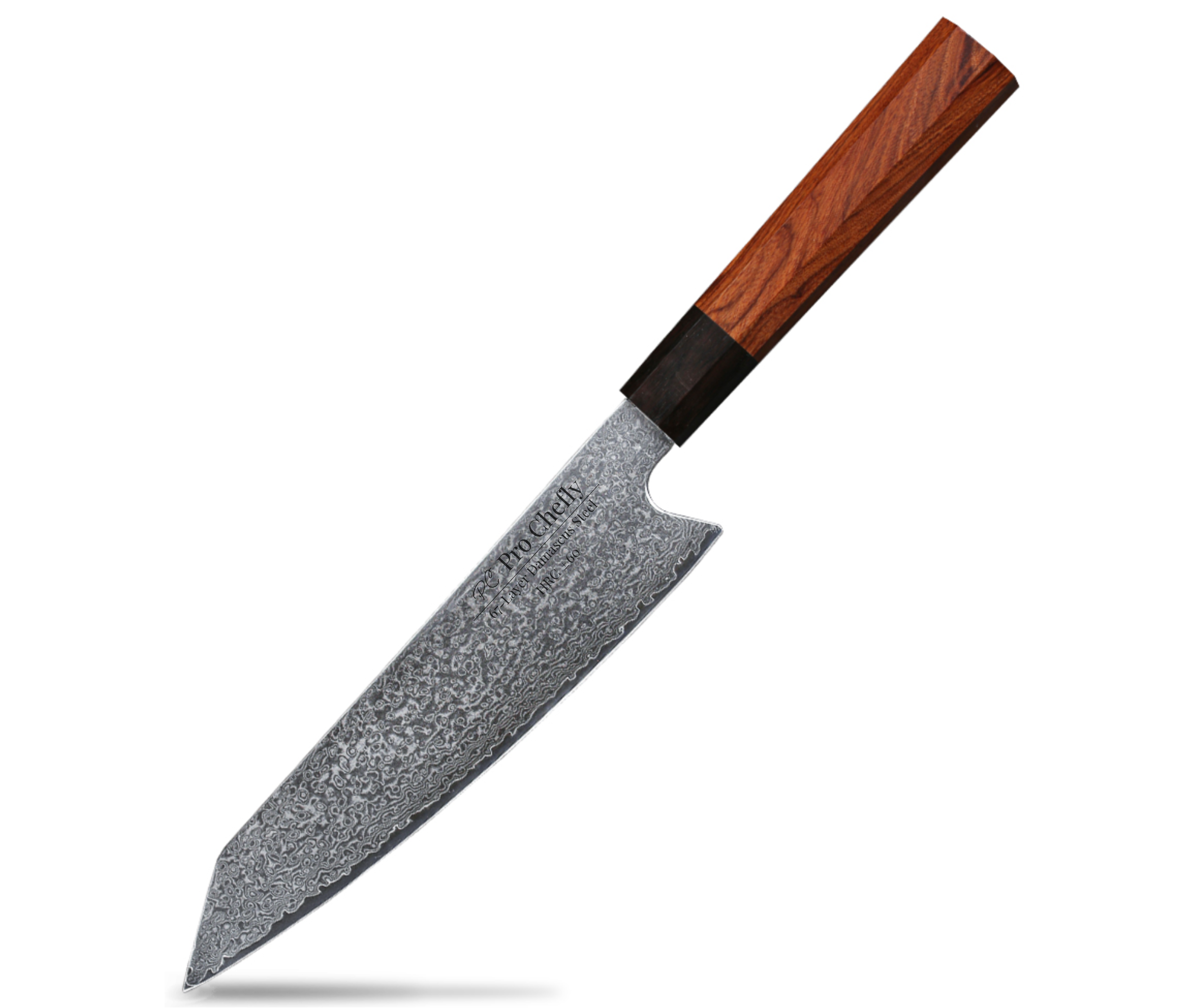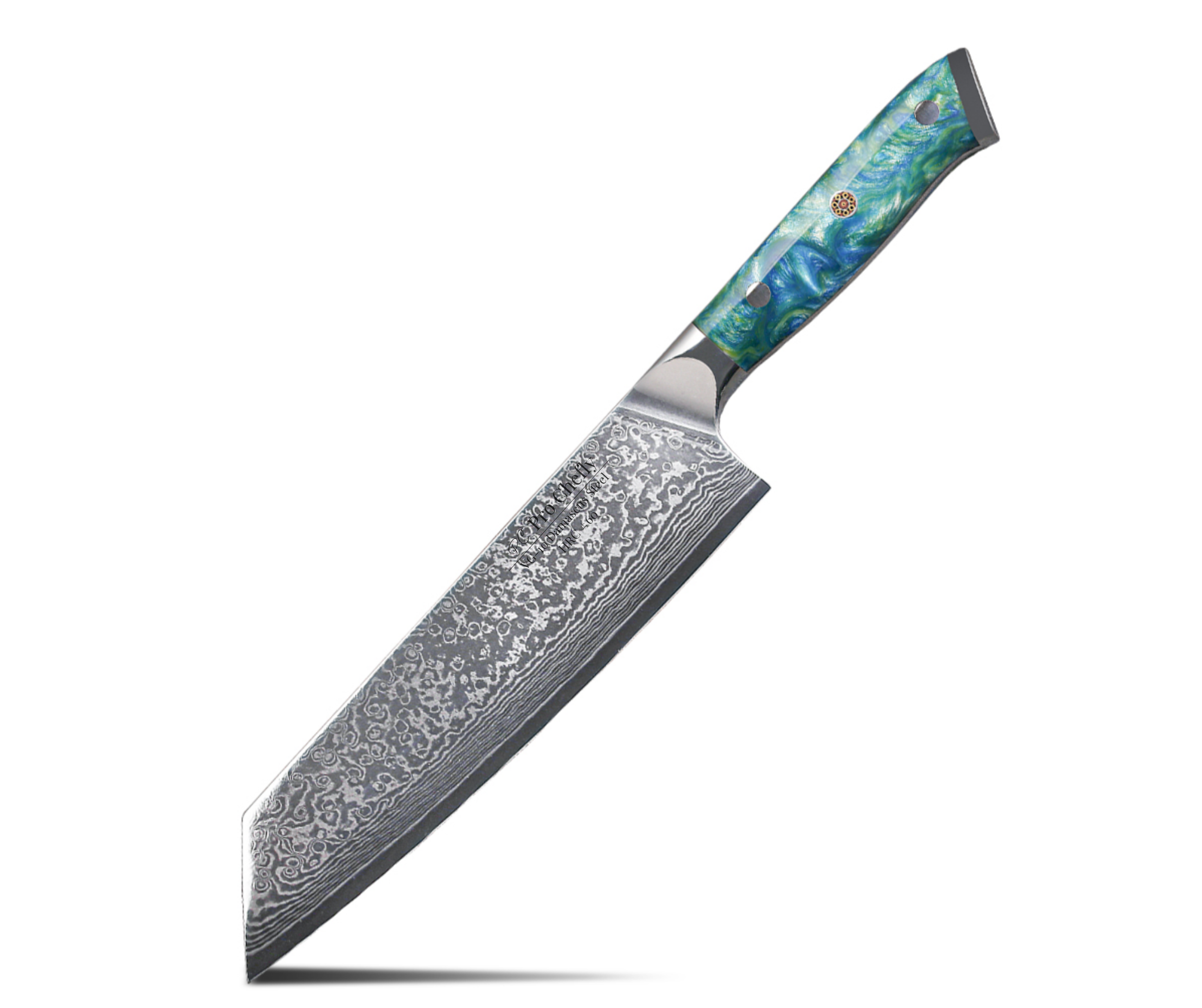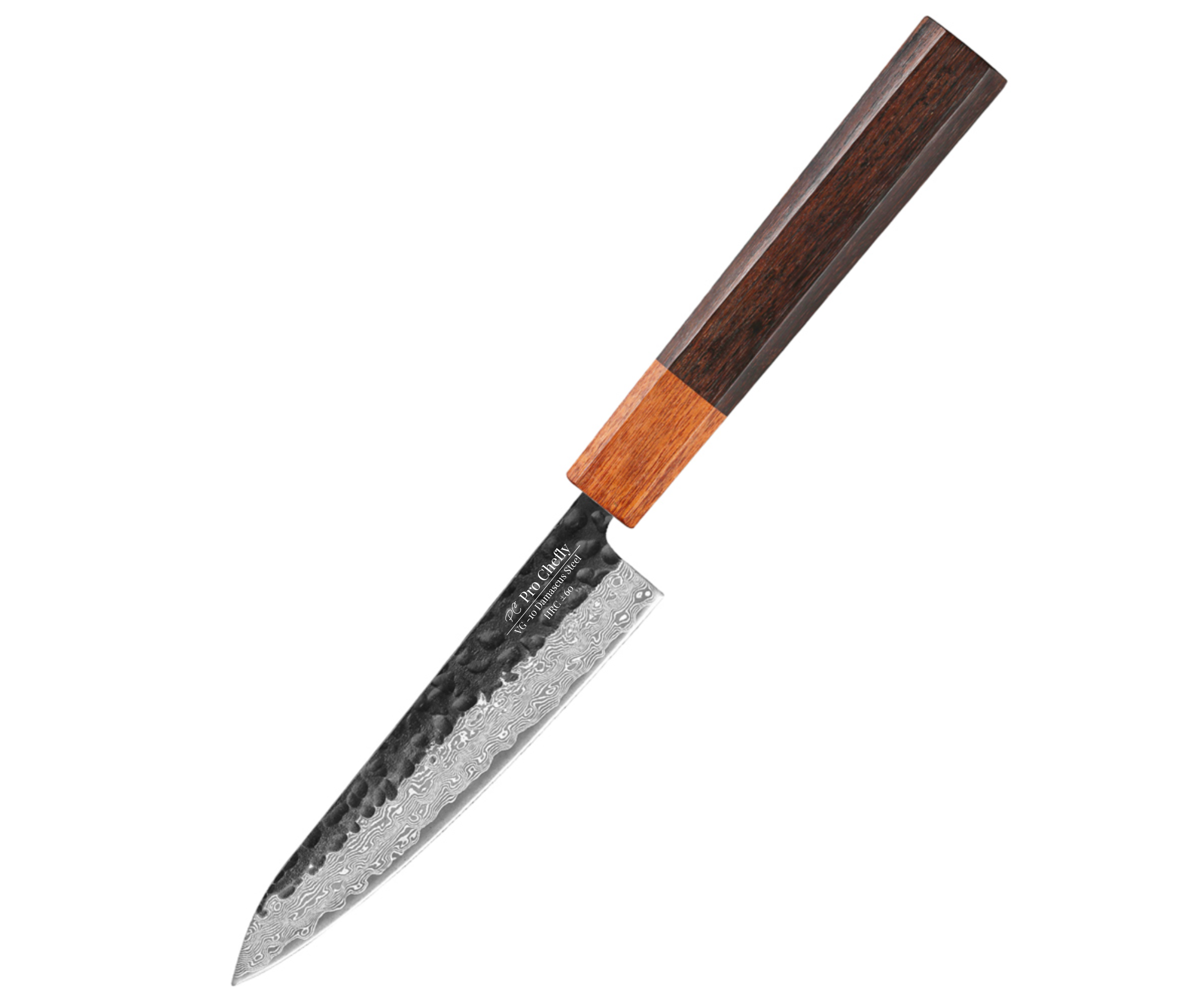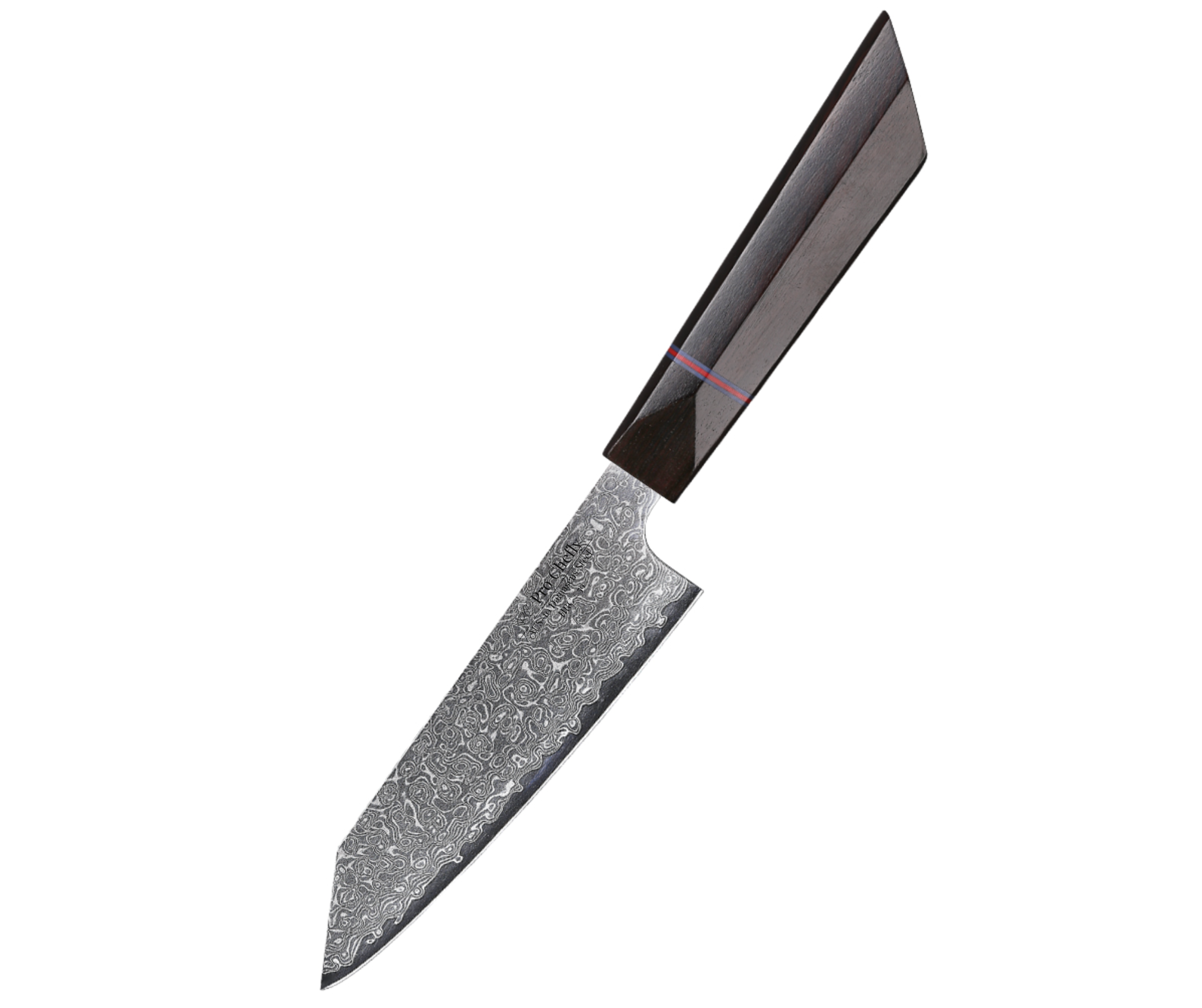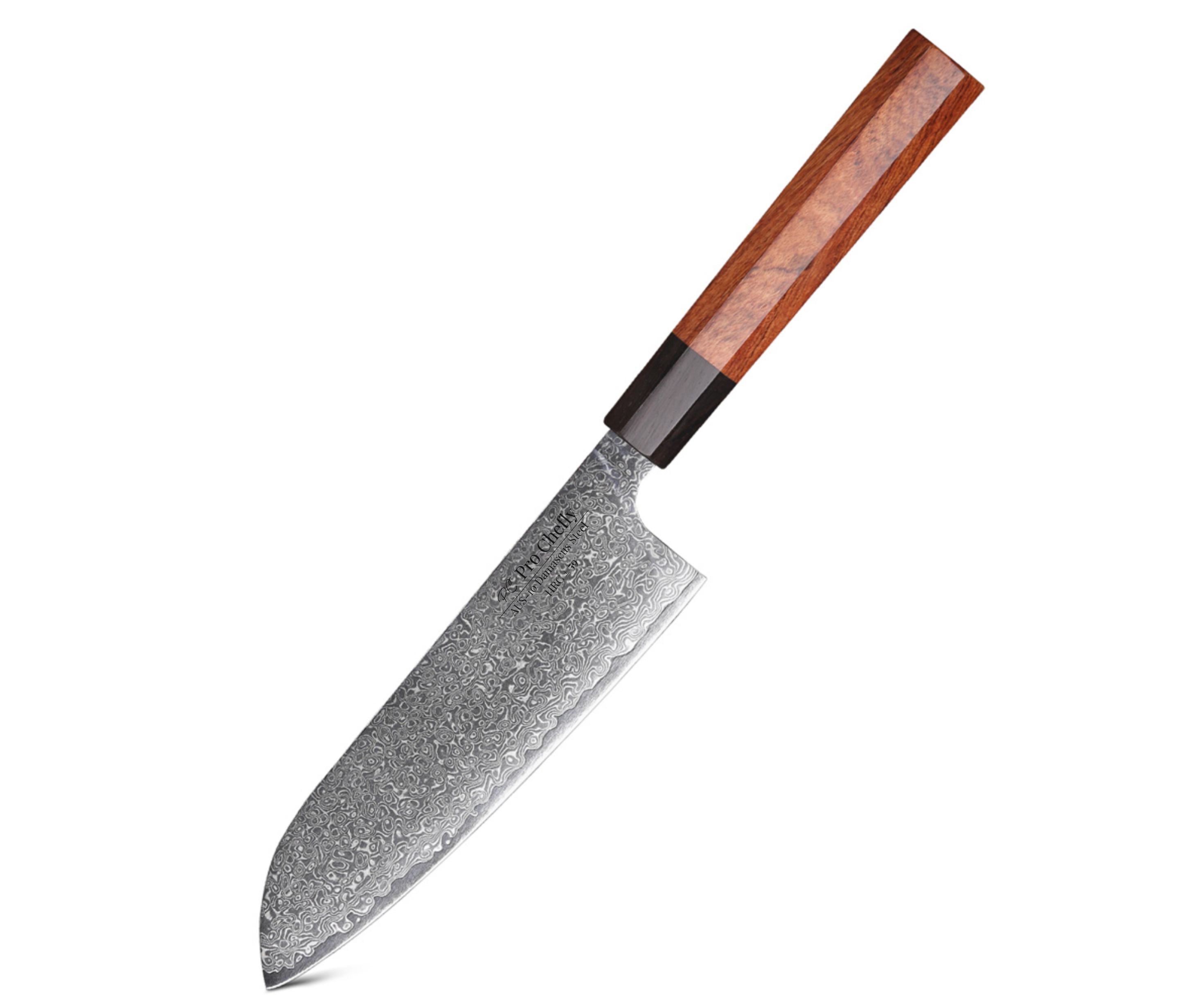Chef’s Overview
Dear Chefs, let’s be honest—when you start diving into Japanese knives, the steel names can sound like code words. VG-10, AUS-10, SG2… it’s enough to make your head spin faster than a food processor. So how do you know which one is worth your money and, more importantly, which one will serve you best in the kitchen? Today we’ll compare VG-10, AUS-10, and other premium steels so you can choose wisely.

VG-10 Steel: The Trusted Workhorse
Think of VG-10 as that dependable sous-chef who shows up early, works hard, and never lets you down. Developed in Japan, it blends high carbon content for sharpness with stainless properties for easy care. With a Rockwell hardness around 60, it holds an edge longer than most standard stainless steels but is still resilient enough to avoid chipping with normal use. That balance is why so many Japanese Damascus knives—including ours at Pro Chefly—are built on a VG-10 core. It delivers sharpness, durability, and resistance to rust, making it one of the most popular premium steels on the market.
AUS-10 Steel: The Challenger
Now, let’s talk AUS-10. Made by Aichi Steel, AUS-10 is another Japanese stainless steel with similar ambitions to VG-10: sharp, tough, and corrosion-resistant. But it’s slightly different in makeup. AUS-10 generally contains less cobalt (which helps with hardness) but more manganese and nickel (which add toughness and ductility). That makes AUS-10 a touch more forgiving—less prone to chipping if you’re heavy-handed with your knife. It may not hold an edge quite as long as VG-10, but it sharpens easily and offers excellent overall performance, especially for cooks who want a durable daily driver.
How Do They Compare to Other Premium Steels?
Step into the wider world of premium steels, and you’ll meet names like SG2 (a powdered steel) and ZDP-189. These steels often push hardness even further, with Rockwell ratings reaching 63 or higher. That translates into edge retention that can feel almost magical—but it also comes at a cost. Ultra-hard steels can be brittle, making them more likely to chip if used carelessly. They’re also more challenging to sharpen, which means unless you’re a whetstone wizard, you may find them high-maintenance. Compared to these, VG-10 and AUS-10 represent balance: sharp enough for precision, strong enough for daily use, and practical for chefs who don’t want to baby their knives.
Which Steel Should You Choose?
Dear Chefs, here’s the truth: there’s no “best” steel—only the best steel for you. If you want long-lasting sharpness with proven reliability, VG-10 is your pick. If you prefer a slightly softer steel that forgives the occasional slip and sharpens up quickly, AUS-10 might suit your style. And if you’re chasing ultra-premium performance with the patience to match, SG2 and others might be your playground. At Pro Chefly, we champion VG-10 because it strikes that perfect balance between razor-sharp performance and real-world usability. It’s the steel that makes sense for cooks who want knives as hardworking as they are.
Knife Collections
Shop the latest in Pro Chefly Damascus Knives
Chef's Notes
Stay up to date with the latest kitchen stories and recipes

- December 05, 2025
Dear Chefs, the holidays deserve a dish that feels slow, soulful, and unforgettable — and few things capture that spirit...

- November 30, 2025
Dear Chefs, there is something unmistakably comforting about bread pudding in November — the way the custard soaks into the...

- November 25, 2025
Dear Chefs, there is something special about roasted carrots in the fall — the way they caramelize, the way their...

- November 20, 2025
Dear Chefs, there is something magical about fall stuffing, especially when pumpkin and sage join the party. The aroma alone...

- November 15, 2025
Dear Chefs, November has a rhythm of its own — a slower pace, a softer light, and a craving for...

- October 31, 2025
Dear Chefs, fall baking is a ritual — the scent of cinnamon in the air, pecans roasting low and slow,...
- Choosing a selection results in a full page refresh.
- Opens in a new window.
